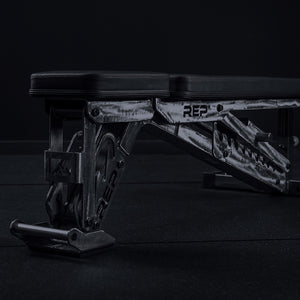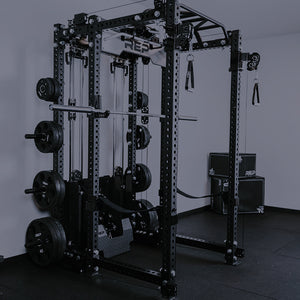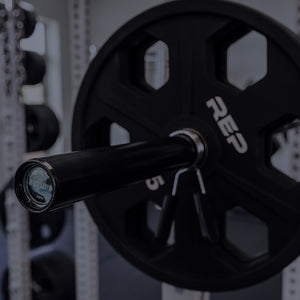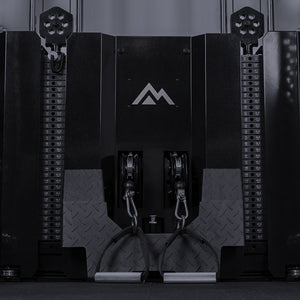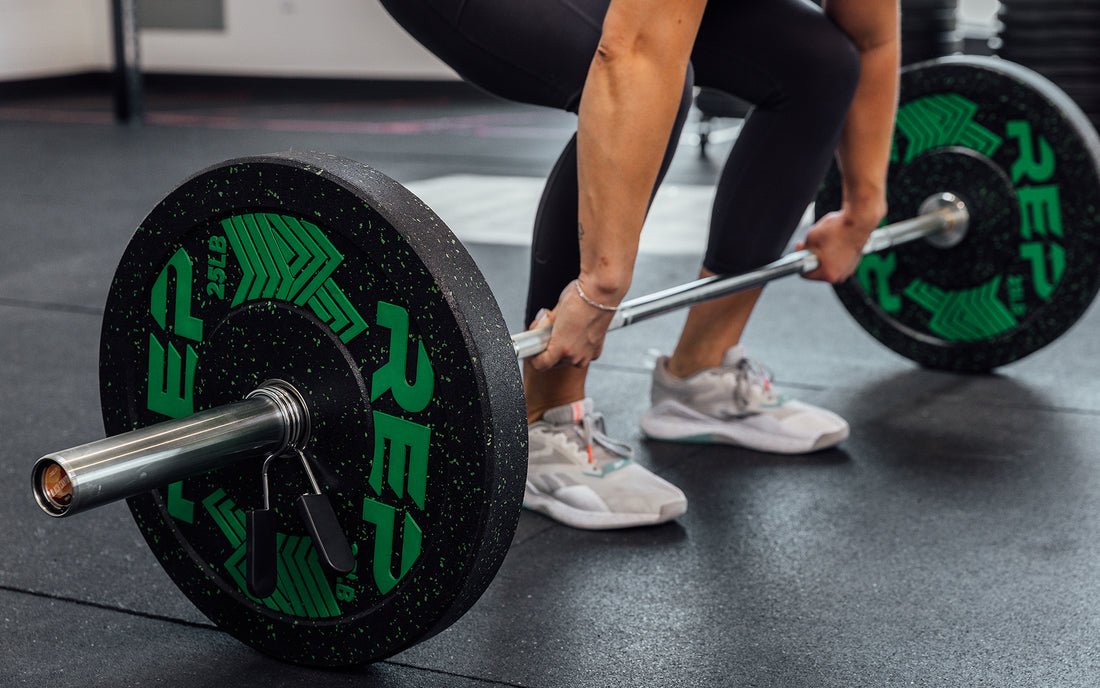
Barbell rows are one of—if not the—most effective exercises for building a bigger and stronger back from top to bottom. In one fell swoop, they target the entire back with power and efficiency.
However, to paraphrase everyone’s favorite Uncle Ben, "with great power comes great need to do proper form." When done right, barbell rows will jack stack your back attack, but it’s important that you don’t compromise the safety of your lower back or improperly engage your muscles. Let’s break it down, shall we?
What muscles do barbell rows work?
When you row a barbell properly, you’re engaging your entire backpack of muscles.
Latissimus Dorsi (your “lats” or gym rat slang, your “wings”) are the largest muscles of your back that flare out like a cobra hood on your sides.
Trapezius (your “traps”) are the muscles most commonly recognized between your shoulders and your neck, but they also run down parallel to your spine, building the columns of muscle in the middle of your back.
Rhomboids: These lesser-known muscles help control your shoulder blade movement.
Rear delts, (the backs of your shoulders), responsible for stability, range of motion, and assisting with pulling your arms back.
Lower back: Arguably the most precious and important muscle to focus on in your body. A great rule of thumb in the gym is to keep your lower back arched during every single exercise. There are a random few moments where you’ll be instructed to round your lower back, but until strictly told to do so, arch, arch, arch!
Biceps: The pulling muscles of your upper arms.
Forearms: The muscles of your forearms are often overlooked when discussing pulling exercises, but development of your grip will help immensely with all pulling exercises, as well as most movements in the gym.
How to do barbell rows

To execute a proper barbell row, there are a few methods, and depending on how you place your hands, you will focus on a different area of your back. It is important to clarify that each variation will involve your entire back. You aren’t just going to turn a muscle off and let it rest while the others do the work, but slight adjustments can shift the lion’s share of the work to separate muscles.
For instance, if you use a wider overhand grip (wider than shoulder width), your elbows are going to flare a bit more, and you are going to pull the bar a bit higher on your stomach. These wide-gripped overhand rows are going to target more of your traps, rhomboids, and rear delts.
If you grip the bar with a narrower overhand (about shoulder width), your elbows will squeeze closer to your body and lift higher as you pull the bar more toward your navel. Narrow barbell rows are more lat focused. Similarly, if you do an underhand row, you will hit the same muscles with the additional focus of adding more involvement of your biceps.
Regardless of which type of barbell row you are performing, your lower back will be a key factor, contracting and balancing your upper body. As a rule, always focus first on your lower back (arch, arch, arch!) and let everything else stem from there. If your lower back feels good, you are good to continue. If your lower back says no, maybe give it a day or two, or at least step back to assess what can be improved to keep it safe and strong.
Now, let’s do some barbell rows!
Step-by-step: How to properly do barbell rows

- Start with your foot placement, conventionally standing approximately shoulder-width with the bar over the center of your feet. If you feel imbalanced, adjust narrower or wider until you find a firm foundation with your bodyweight in your heels.
- Grab the bar—shoulder-width for narrow rows (over or underhanded), or wider than shoulder-width for wide-grip overhand.
- Stand up with the weight to ensure you have control before moving into position.
- Push back with your hips, allowing your knees to bend a little until your thighs and torso are both at 45 degrees or until the bar is below your knees. Think of yourself as a glorified scissor lift.
- Arch your lower back. Do not allow it to round. If this is difficult, lower the weight and practice your form until you can keep a straight, unified back from top to bottom. Arch, arch, arch!
- Starting with your arms fully extended, squeeze your lats and shoulder blades, pulling the barbell up into your stomach in a straight line. Do not roll your shoulders or rock with your hips. If it looks like a dance move, you should probably lower the weight until you can control it.
- Control the negative by lowering the weight to full extension. Do not drop the weight, both for safety and because you’ll be robbing yourself of some of the best gains.
- Once you have completed your set, return the weight to a rack or the ground, and voila, your backpack of muscle is being built!

What about upright barbell rows?
Upright barbell rows are an exercise often included in the same conversation as traditional barbell rows because they work many of the same muscles, but the focus shifts dramatically from the back to the shoulders. They serve your shoulders with similar benefits as front raises or lateral raises, with the added benefits of working more of your traps, upper back muscles, and biceps.
How to do an upright row:
- Stand with feet shoulder-width for a firm foundation. Adjust as necessary.
- Grab the bar a little narrower than shoulder-width and stand with the bar held at arm’s length. If you feel discomfort, experiment adjusting your hands a little wider or narrower until your wrists and elbows feel smooth motion.
- Keeping your back straight and your shoulder blades pinched, pull the bar upward as high as you can while leading with your elbows.
- At the height of the lift, squeeze the heck out of your back muscles and enjoy the juicy burn in your shoulders.
- Return the weight to the bottom of the lift with controlled motion.
- Repeat for 12-15 reps and bam, upright rows, baby!
Now go row that back and those shoulders into the fiery burns you deserve, iron soldier!
Learn More
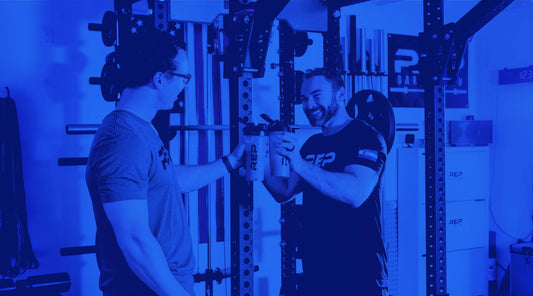
NEWSLETTER SIGNUP
Product launch information, promotions, blogs, and REP news.

